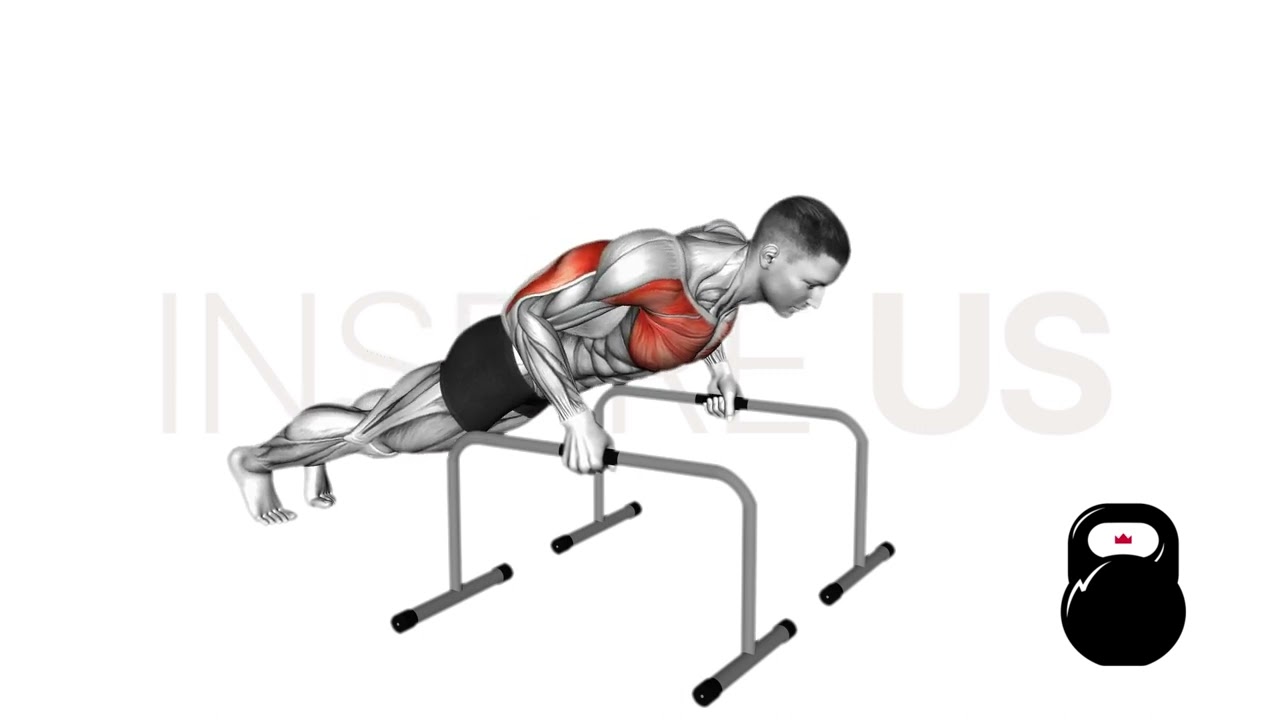Push Up Bars: Are there any Benefits to Using Them?
The conventional push-up has been firmly established as an all around solid exercise - but what if things could be taken a step further with the inclusion of a rather simple piece of equipment?
Enter the push-up bar; a pair of handles functionally similar to parallettes bars that alter the difficulty and mechanics of the conventional push-up, providing a safer and more effective exercise without the need for additional resistance being added.
If one were to narrow down the many benefits push-up bars provide, it could be said that they protect and elevate the wrists in a manner that produces a larger range of motion - effectively turning a regular push-up into a deficit push-up, so to speak.
What are Push-Up Bars?
Push-up bars are a type of accessory calisthenic equipment used to enhance the benefits of the conventional push-up.
From a visual standpoint, they appear to be quite similar to parallettes or dip bars, but will instead feature the “U”-shaped curve being elevated only a few inches off the ground, unlike similar implements that feature a significant amount of elevation.
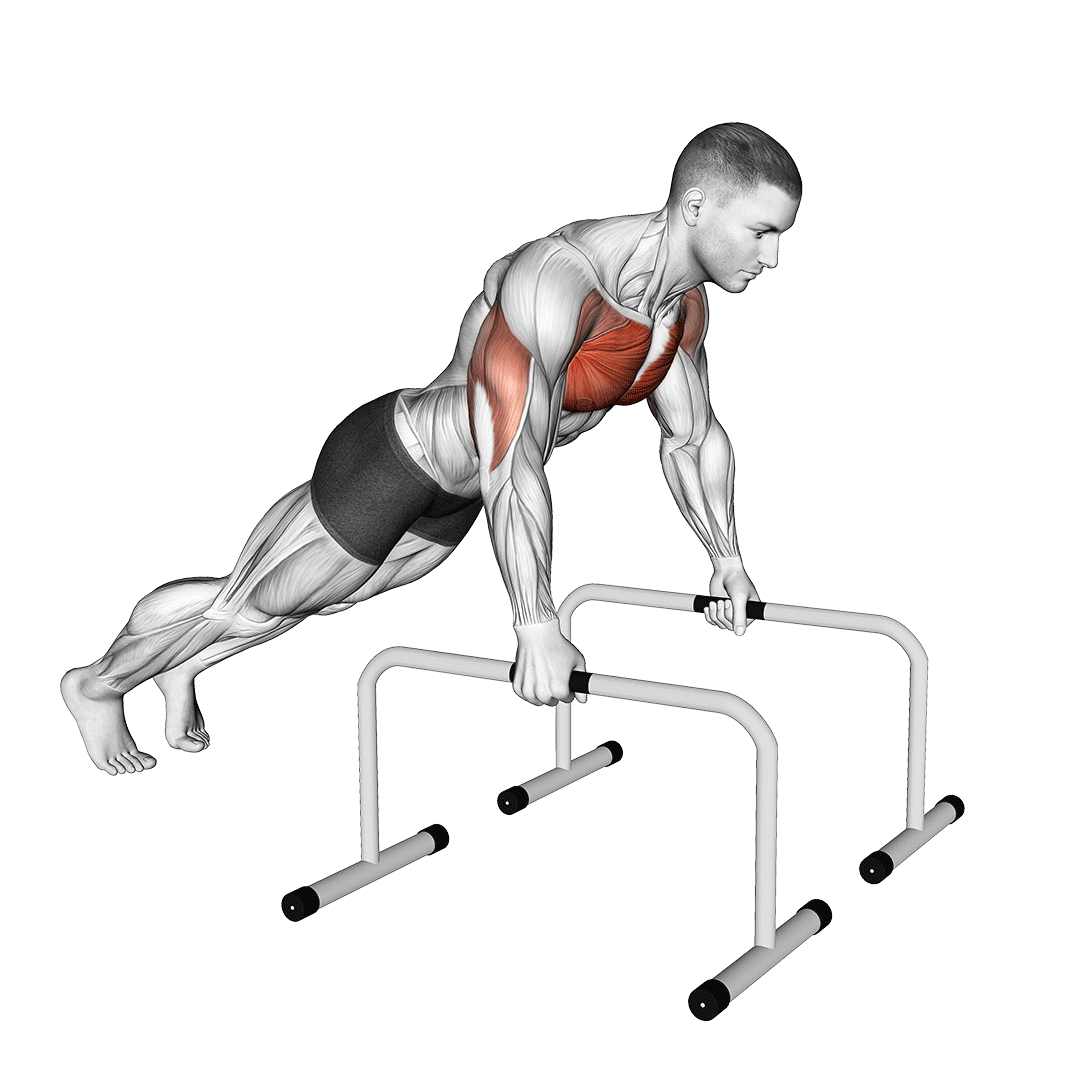
Push-up bars are often highly affordable and constructed from material sturdy enough to withstand the weight of an individual, hence the fact that they are often considered a classic among at-home workout enthusiasts.
Who Should Use Push-Up Bars?
So long as you are capable of performing a regular push-up with good form, you should be fully able to take advantage of push-up bars. While they do indeed make the push-up more difficult, it is not a large enough change to make a difference for exercisers beyond the novice level of conditioning.
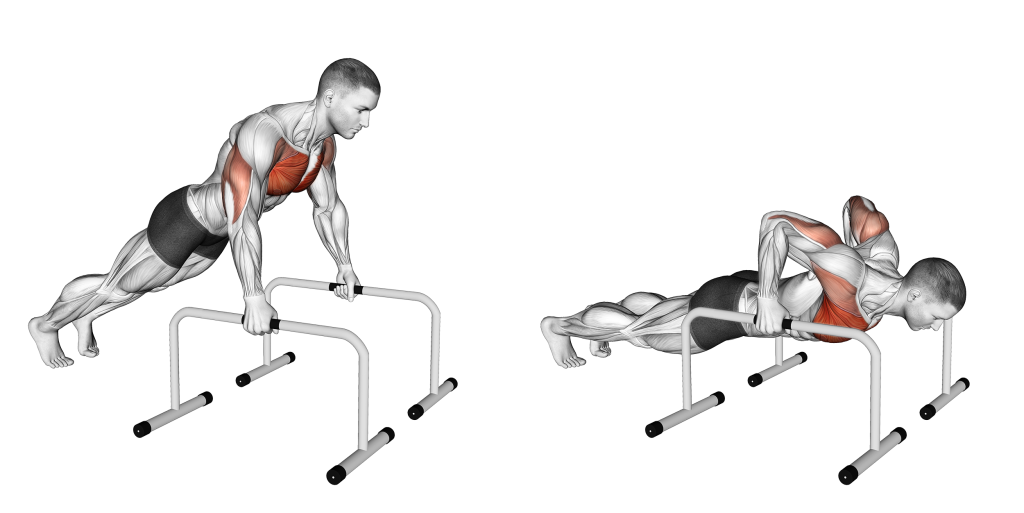
Push-up bars will provide the most benefit to intermediate level calisthenic athletes who prefer training in the comfort of their home, as they can allow for greater training stimulus to be derived from push-ups without the need for complex variations or the use of more costly exercise equipment.
When Shouldn’t Push-Up Bars be Used?
Though push-up bars are relatively safe to use, it is recommended that individuals with a history of shoulder injury avoid their usage entirely. The deeper range of motion caused by push-up bar usage can place the shoulders in a disadvantageous rotation, and can increase the risk of shoulder injury for those susceptible.
How are Push-Up Bars Used?
Push-up bars simply require the exerciser to hold them in a neutral grip as they go about performing a regular push-up.
As opposed to placing one’s hands flat on the floor, push-up bars will place the hands and wrists in a neutral position, as well as elevate them higher off the ground - thereby allowing the exerciser to “dip” deeper between their own hands, and reducing pressure placed on arms in their entirety.
How to do a Push-Up With Push-Up Bars
To perform a push-up with the use of push-up bars, the exerciser will enter the standard plank position with their legs extended across the floor and their hands set parallel to the shoulders.
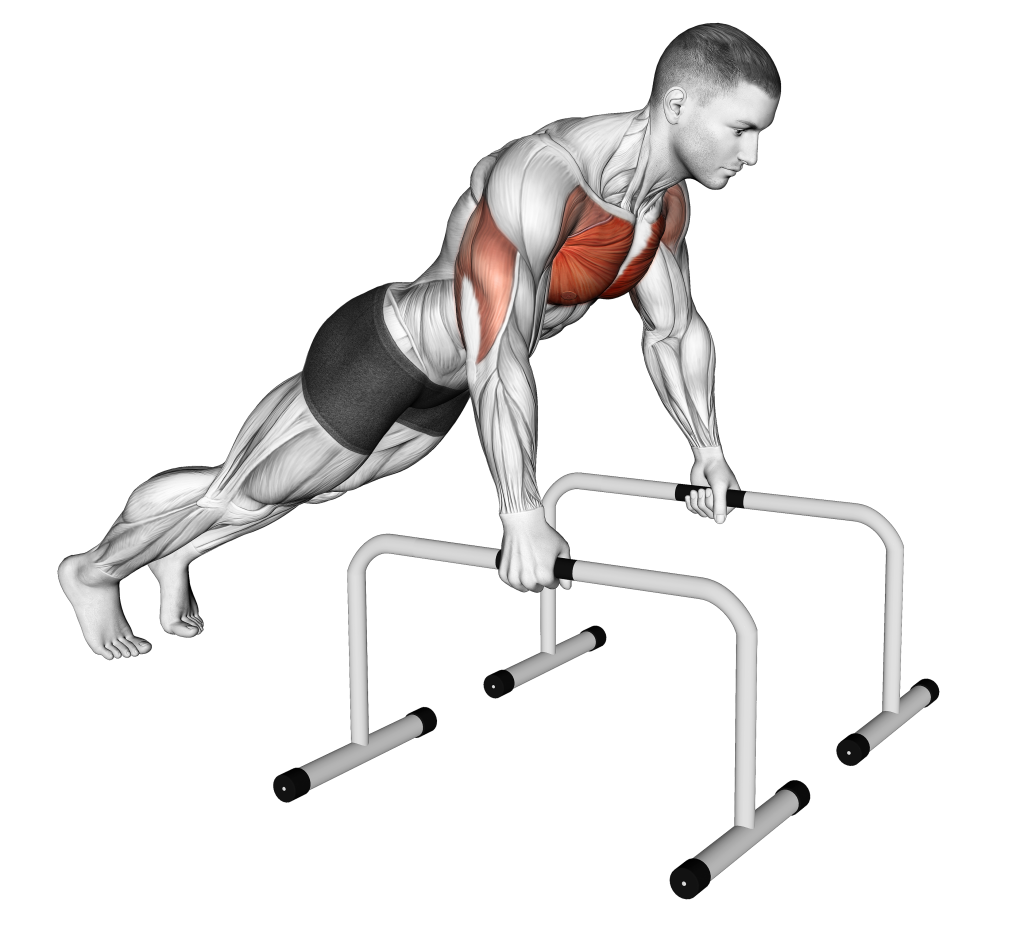
Unlike in a standard push-up, this particular variation will involve the exerciser gripping the handles of the push-up bar in a neutral grip, keeping the wrists in-line with the hands as they do so.
Once the starting stance is adequately stable, the exerciser will then simply perform the push-up as normal by bending at the elbows and lowering their torso between their hands, stopping once the chest is within a few inches of touching the ground.

To complete the repetition, the exerciser will simply push through their hands into the bars, extending the elbows as they rise upwards and return to the starting position.
Benefits of Push Up Bars
1. Push-Up Bars Protect the Wrists
Individuals with poor wrist mobility may occasionally complain of wrist and forearm pain after a set of push-ups. Such strain is primarily a result of the torso’s weight producing pressure throughout the hands and wrists, and can limit the effectiveness of the push-up by a significant margin.
Fortunately, push-up bars help diffuse pressure created during the push-up by “stacking” the wrist in a neutral manner, allowing the forearms to translate the weight of the torso into the ground as the hands and wrists are in a more advantageous position.
2. Maximizing Wrist Protection from Push-Up Bars
Though push-up bars protect the wrists by curling the hands into a fist, exercisers can further maximize the protection they provide by ensuring that the wrists are held in a vertically neutral position throughout each repetition.
Furthermore, ensuring that the hands are set parallel to the shoulders (but also wider than shoulder-width apart) will also aid in protecting the hands and wrists from strain.
3. Push-Up Bars Increase Range of Motion
Because push-up bars raise the hands further off the floor, they effectively increase the depth to which the exerciser can lower their chest - thereby maximizing range of motion. Much the same benefit can be seen in deficit push-ups, which also involve increasing the depth of the exercise.
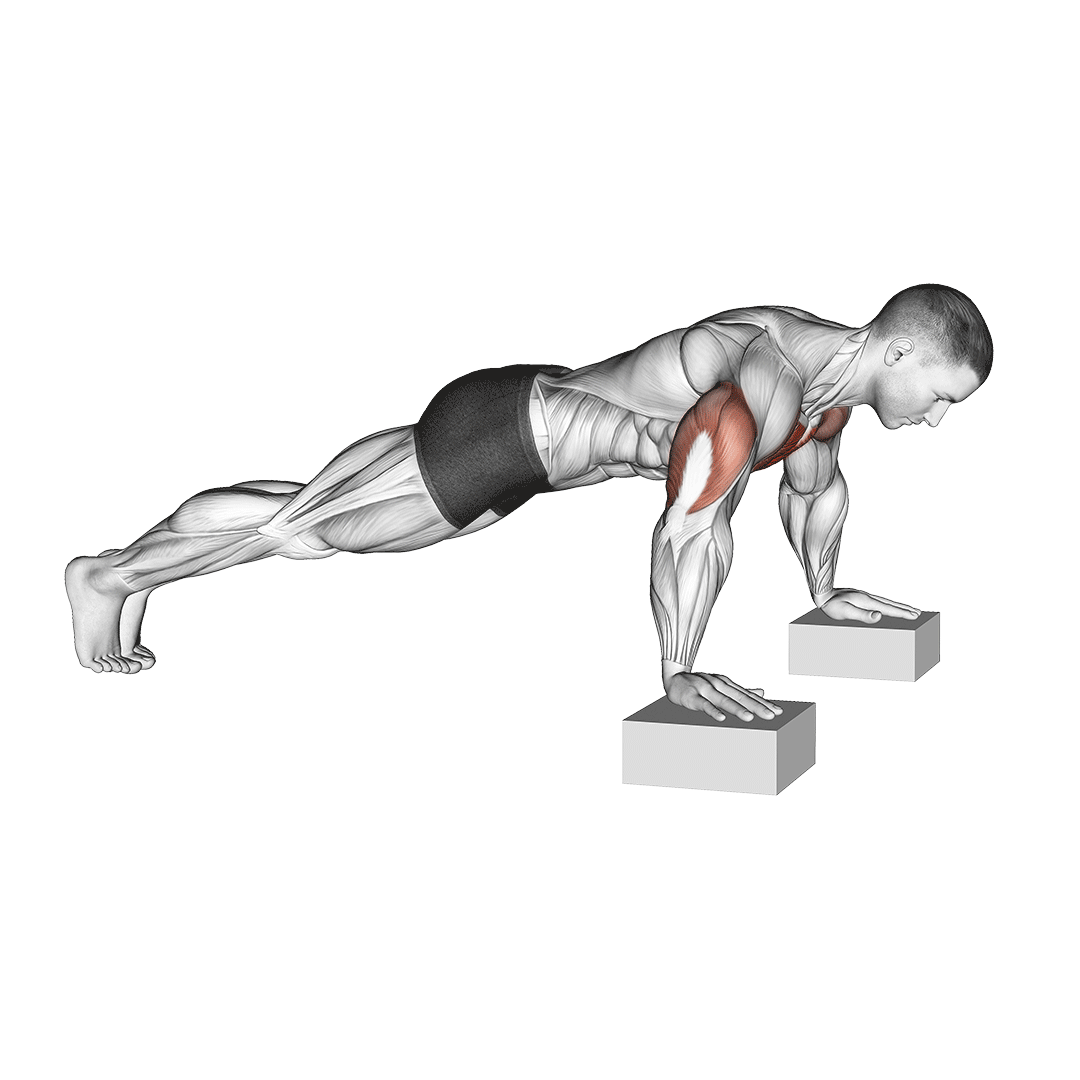
While having a wide range of motion is only part of what makes an exercise effective, it can nonetheless result in greater muscular hypertrophy and the development of upper body explosiveness.
For athletes or higher level exercisers seeking a boost in their training, push-up bars may be the perfect solution.
Why an Increased Range of Motion is Important
The term “range of motion” or “ROM” is simply the extent to which a dynamic movement occurs. Half a bicep curl is only half the range of motion of a full bicep curl, for example.
The reason range of motion is considered so important in muscular training is simple; time under tension necessitates a longer dynamic movement. The wider an exercise’s range of motion, the longer each muscle will be subjected to tension, and the greater the physical developments that will be seen.
For the push-up specifically, this means that the chest will grow more mass, and improve in terms of rate of force output - though other muscles like the triceps and serratus will also see some benefit to the increased ROM produced by push-up bars.
In short - a bigger range of motion means better muscle growth.
4. Push-Up Bars Can Improve Chest Contraction
Apart from protecting the wrists and creating a wider range of motion, push-up bars are also excellent for boosting recruitment of the pectoral muscles.
In turn, exercisers will see a marked improvement in the definition, size and actual performance of their pecs - making push-up bars a must have for calisthenic athletes or exercisers seeking the barrel chest aesthetic.
Why do Push-Up Bars Work the Chest Better?
The main reason push-up bars work the chest better is the elevation in which the hands are placed - this creates a deficit that allows the shoulders to abduct to a greater degree and, by extension, recruit the pectoral muscles in a manner that is not achievable with conventional push-ups.
In essence, push-up bars will take some of the benefits seen in bodyweight dips and help translate them to a push-up, thereby resulting in greater chest muscle development.
5. Push-Up Bars Improve Forearm Recruitment
While forearm training isn’t quite what one may think when imagining the effects of push-ups, including the push-up bar can allow for great isometric contraction of the many muscles of the forearms. Over time, this will result in greater grip strength and generally more stable forearm mechanics as a whole.
The reason behind why conventional push-ups do not compare in terms of forearm development is because of the grip form used, with the push-up bar requiring the exerciser to grip the handles in a fist and thereby forcing the muscles of the forearms to isometrically contract in order to stabilize the entire movement.
6. Using Push-Up Bars is Easy, Convenient, and Compatible with Other Exercise Variations
Unlike other types of fitness equipment, push-up bars are relatively cheap, do not require any sort of advanced exercise familiarity and may be used for more than just the conventional push-up.
Not only does this mean that push-up bars are excellent for athletes of all training levels, but it also means that home gym owners will get more out of their dollar, as push-up bars can be used for other exercises like the planche, plank or even handstand push-ups.
Furthermore, the light weight materials used to make push-up bars (and their relatively small size) can allow exercisers to maintain their workout routine, even when far from home.
Frequently Asked Questions (FAQ)
What Muscles Do Push-Up Bars Work?
Push-up bars train much the same muscles as regular push-ups, only with greater chest and forearm recruitment on account of the push-up bars themselves.
Keep in mind that push-up bars do not need to be performed only with push-ups, as they may be used for any number of other body weight exercises.
Do Push-Up Bars Build More Muscle?
Yes - push-up bars allow for a greater range of motion and time under tension to be achieved with each repetition of the push-up, thereby allowing for greater muscle mass to be developed.
For the best results, perform each repetition of the push-up in a slow and controlled manner, and ensure that your recovery outside of the gym is optimized as much as possible.
What Happens if I Do Push-Ups Every Day?
Chances are, if you perform push-ups every single day, you will likely sabotage your own development through something known as overtraining.
In order to ensure that the muscles grow correctly, time must be taken off from training so as to allow the body to recover. Training the same muscles every single day will undoubtedly interrupt the recovery process, and potentially result in injury if allowed to continue for a long enough period.
In Conclusion
Keep in mind that the push-up bar is only meant to accentuate an otherwise effective push-up, and it is vitally important to perform the exercise with correct form if you wish to maximize the benefits that using push-up bars can provide.
And if you can’t quite find a set of push-up bars to purchase - don’t worry, you can always try performing deficit push-ups as an alternative.
References
1. Jung J, Cho W. Effects of push-up exercise on shoulder stabilizer muscle activation according to the grip thickness of the push-up bar. J Phys Ther Sci. 2015 Sep;27(9):2995-7. doi: 10.1589/jpts.27.2995. Epub 2015 Sep 30. PMID: 26504343; PMCID: PMC4616144.
2. Lee S, Shim J, Park M: A study on the activation of forearm muscles during gripping by handle thickness. J Phys Ther Sci, 2011, 23: 549–551.

